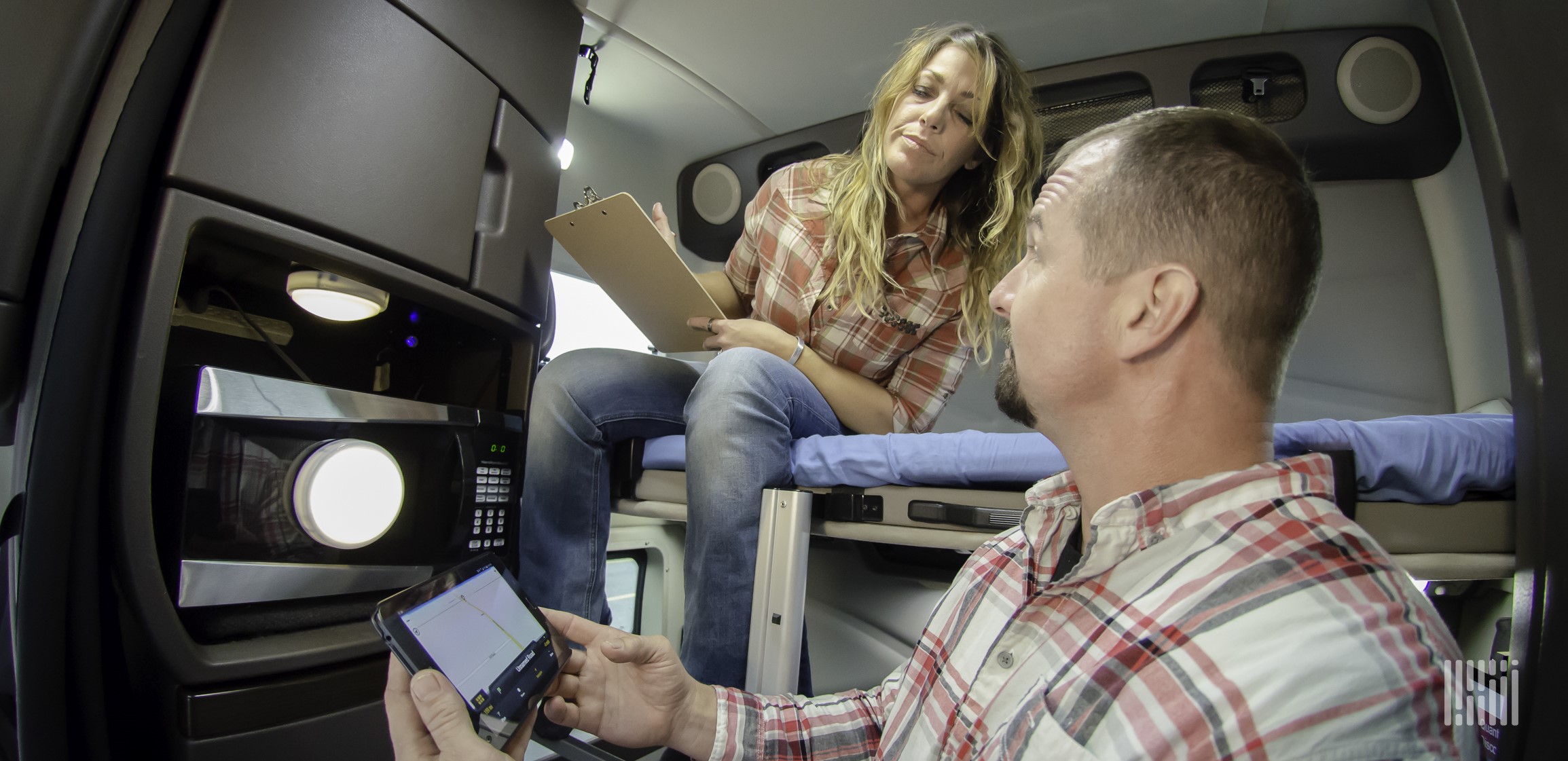When looking for jobs, truck drivers use several filters. They keep an eye out for trucking companies with fair pay, benefits, flexibility and various other perks. Ultimately, every truck driver wants to find the best career choices for them. It all comes down to finding options that fit their objectives, schedule and driving arrangements.
Many truck drivers choose to go solo while others prefer team driving. Keep reading to explore the benefits of both approaches so that you can determine the best path for your career in the long run.
What is solo driving?
Solo driving is when a truck driver operates a vehicle and drives distances by themselves. It’s only you and possibly your pet, depending on your company’s policies, but essentially, there will not be any other people there with you as you go from Point A to Point B.
How does solo driving work?
Some drivers prefer to drive alone. They haul cargo to various destination points with fewer interruptions along the way. Solo drivers are fully responsible for themselves and their cargo, meaning they have to make decisions on their own.
4 benefits of solo truck driving
Solo truck driving has several benefits. Some of the most crucial advantages are outlined below.
Complete control
Solo truck drivers are given full control over the entire driving experience. As a solo driver, you get to decide when you make pit stops and when you get back on the road to continue driving, barring legal limits.
With a partner, you won’t have as much control because you will need to compromise sometimes. For instance, if your partner has to use the restroom or make a pit stop for some other reason, you will have to accommodate their needs as well.
As such, you may take longer to travel due to the amount of time that it will take to make stops along the way. Some partners will coordinate their pit stops to reduce friction, but the risk of taking more time to travel is always present when you’re part of a team-based truck drive.
More spacious
Trucks don’t have a lot of space to work with, but a solo driver gets to use all of the space within a truck. Some truck drivers bring their pets with them when traveling, but you can also put food or other personal items in the passenger seat.
Solo truck drivers often feel less cramped during their long commutes, but if you get lonely, trading space for a companion might be preferred. Regardless, longer hauls paired with less space can feel challenging.
Control your own schedule
Some truck drivers commute on weekdays so that they can spend time with their families during the weekends. As a solo driver, you can set your own schedule and then stick to it. Team drivers have to negotiate with their partners and make sure they are on the same page.
Sometimes, you may get home later than planned because your team member wants to do an additional route. Team driving can work if you are both in sync, but significant scheduling differences can create a lot of friction. Solo drivers can avoid this tension, allowing them to stay in control.
Avoid driver disputes
Solo drivers can make real-time decisions without worrying about any driver-related disputes. During a traffic jam, you may want to take another route to reach the final destination faster.
Solo drivers can make this choice instantly, but your team member might not be on the same page. Your team member may insist on staying on the same route instead of picking a different route. Discrepancies like these can make a long ride feel longer, but solo drivers get to avoid this fate, which is often viewed as a benefit.
What is team driving?
Team driving is when a trucker drives with a partner. You and your team member take turns driving the truck and dealing with loads.
As such, you won’t have to log all of the miles on your own. Plus, you’ll get to bypass the amount of time you can be on the road by sleeping while your partner drives.
How does team truck driving work?
Team drivers complete entire routes together. They alternate with each other to make sure they are within the legal limits of their drive time.
Since team driving is a choice, people who prefer to work collaboratively rather than commuting by themselves can work to select their perfect partner. There are monetary incentives for team driving, which you will split with your partner, but covering more miles together means more money overall, so it all works out.
4 benefits of being a team driver
Some truck drivers prefer team driving jobs because they want to have a partner on the road with them instead of opting for solitude. If you think team driving trucking might be your next route, exploring some of the main advantages might help you make your decision.
Companionship
Some truck drivers want to talk with someone to pass the time. Though solo truck drivers can call family members and speak with them over the phone while on the road, family members won’t always be available every time you want to talk to someone.
They might not even be awake when you call if you’re driving late at night. Team members can offer each other a constant source of conversation, which can be a means to pass the time on the road.
Earn more money
Although you have to split the pay with your team member, most team drivers earn more money. Covering more miles and unloading and loading trucks quicker makes up for having to split the pay.
Plus, many trucking companies pay team drivers more per mile. More miles on the road will increase your earning potential.
Spend less time driving
You don’t have to drive as many miles when you take on routes with a partner. Your fellow truck driver can take over for you when you grow tired, giving you a break in the process.
It’s okay to need a break. Everyone needs them sometimes. But with a team member, the truck will still move as you recuperate because your partner will drive as you rest.
More sleep
Truck drivers rarely get enough sleep. Driving on the road while feeling tired can increase the likelihood of an accident as well as health problems in the future.
The days can drag on and feel unenjoyable if you do not have enough sleep. Team drivers operate in shifts, and you can sleep for a few hours while your team member takes over.
Solo drivers do not have that flexibility. Their only way to sleep is to pull over, which is something many truckers want to resist since a stationary truck doesn’t make money.
Solo driving vs team driving
Solo driving and team driving both have their own sets of pros and cons. Solo drivers get to experience the freedom and flexibility associated with a lone-wolf approach.
On the other hand, team drivers prefer camaraderie, more money and the opportunity to spend longer hours on the road while also getting to sleep as needed. You will make tradeoffs with either decision, and you’ll have to assess which tradeoffs are worth it for your career as well as your livelihood.
Log the miles your way
Truck drivers make money when they are on the road. Hauling cargo over greater distances is optimal, but drivers have options when it comes to achieving that goal.
Solo driving gives drivers more flexibility, but you can cover more miles with a team member, though you will need to split the money as well. Truck drivers have to decide which advantages are more favorable for their lifestyle and preferences.
FAQ
Team truck driving can be worth it for drivers who want to maximize their earnings potential and don’t mind close quarters with another driver, but the lifestyle requires sacrifice of personal/family time.
The top pay for experienced team drivers at the largest carriers can exceed over $200,000 per year.
Team drivers can legally drive up to 11 hours per day splitting time behind the wheel for a total of 22 hours of driving time, allowing them to cover over 1,000 miles in a day before stopping.



